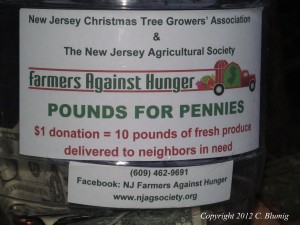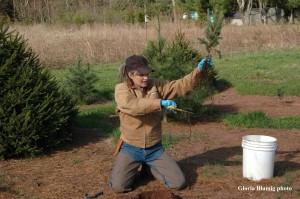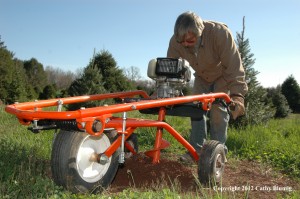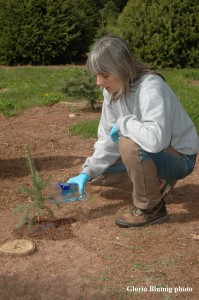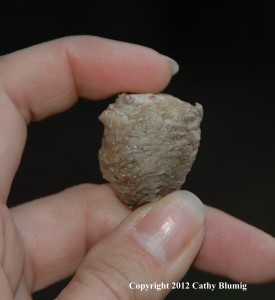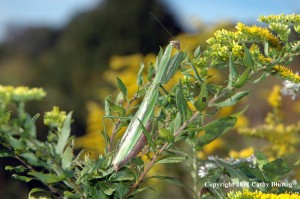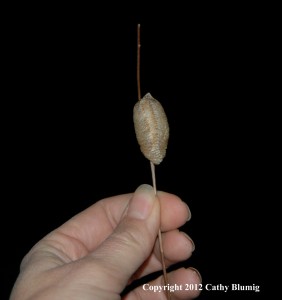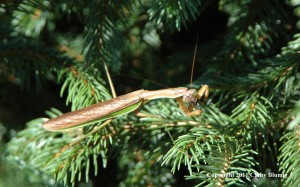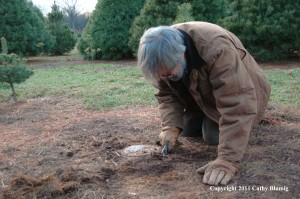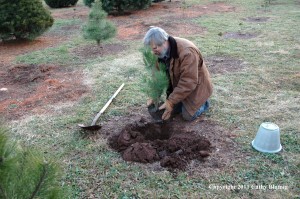Wolgast Tree Farm, along with other participating members of the New Jersey Christmas Tree Growers Association, is joining the New Jersey Agricultural Society’s Farmers Against Hunger “Pounds for Pennies” holiday fundraiser. Farmers Against Hunger was started in 1996 by local farmers who wanted to donate their surplus, locally grown produce to Garden State soup kitchens, food banks, emergency feeding organizations and the like to help meet the nutritional needs of needy New Jerseyans. Fresh fruits and vegetables are often lacking in the diets of those who are hungry or food insecure. By linking farmers who have locally produced surplus fruits and vegetables with over 60 service organizations this critical nutritional need is helping to be met. Over 15 million pounds of produce has been provided to some of the neediest in our state including children, seniors and the working poor since 1996. For every dollar donated to the “Pounds for Pennies” campaign Farmers Against Hunger will deliver 10 pounds of fresh produce to a needy person in the Garden State. It is the aim of Farmers Against Hunger to provide fresh produce to those who need it 52 weeks out of the year – a huge challenge, but one they can achieve with your help. To learn more about the Farmers Against Hunger program, visit the New Jersey Agricultural Society webpage at www.njagsociety.org and click on the Farmers Against Hunger link.
Archives for 2012
Wolgast Tree Farm Joins Farmers Against Hunger in “Pounds for Pennies” Fundraiser
Planting The Future At Wolgast Tree Farm
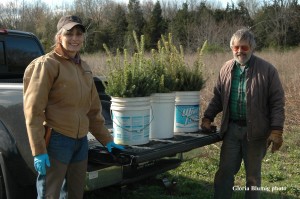
Some of the 700 trees - in this case Colorado blue spruce - that the two of us planted in early April.
We spent the early part of April “planting the future” here at Wolgast Tree Farm, which means we planted young trees that we hope will grow into beautiful Christmas trees several years down the road. The two of us hand-planted seven species – Canaan fir, Concolor fir, Turkish fir, Colorado blue spruce, Norway spruce, White pine and Scotch pine – for a total of over 700 trees. When they’ll be a size that folks would like them to be their Christmas tree depends on many things. Pines tend to grow the fastest (about 6 or 7 years to reach 6 feet), but a heap of things figure into how fast they’ll grow such as where a tree is planted. It’s important for a tree to be planted on a site that helps it to grow rather than stress it. Fir species generally won’t grow well in wet, clay soils so we don’t plant firs in those spots on the farm. Pines, however, are usually more tolerant of wet spots so that’s where we plant them. Choosing the proper microsites so the trees have a better chance of being healthy and better able to fight off insects and diseases is part of our Integrated Pest Management (IPM) plan.
Other things that can stress the tree and make it more vulnerable to diseases and such is how it is planted. We trim the roots to fit the depth of the hole
and are very careful to make sure all the roots are facing down. Roots that have been planted with the tips facing up will stress the tree, so will planting the tree too deeply in the hole or too shallow.
We use a special piece of equipment to make the hole that the trees are planted into called an Auger Transporter. It drills a hole into the ground which creates a better environment for the roots to grow compared to the planting bar that we used in the past, which is more restrictive to the roots.
The Auger Transporter is quite a piece of machinery. We’ve always thought we could use it for ice fishing but we haven’t tried it out yet!
Much less rain fell during the early part of the spring than usual and we worried about all the young trees we just planted. The soil had been very dry – like ground up chalk – and that wasn’t good for those young trees. They wouldn’t be able to develop healthy root systems in dry soil or they might even die. Thankfully we got some rain now, but to hold them over before that happened,
we went up and down the rows with a bucket of water and a plastic seltzer bottle with the neck cut out to water each tree that had just been planted. We could target just where we needed the water to go, but it was a lot of work. We think it may have saved many trees that would have died otherwise. Hopefully we were right!
Wolgast Tree Farm would like to offer a heartfelt “thank you” to everyone who came out to the farm this year, and wish you all a New Year filled with health, happiness, good fortune and love. It was wonderful to see so many returning customers and to catch up (when we had a moment!) with your family goings-on. We enjoyed too, meeting lots of new faces this past season. That some of you even brought us gifts was extremely thoughtful and touching. Without a doubt we have the best customers around and we feel honored that you chose our Christmas tree farm to be part of your holiday celebrations. We really are lucky!
We’ve already started to get ready for the growing season next year.
Even before Christmas, we were out clearing around stumps to cut them flush with the ground so we won’t hit them when we mow during the summer, and to clear the way for planting seedlings next to them this spring. Soon we’ll be calculating how many seedlings to order and how many of which tree species we should purchase.
In addition to clearing around stumps, the last thing we did in the field today for 2011 was to plant a Scotch pine seedling that one of our customers had given to us a few weeks ago. Apparently, this person’s mother was growing the seedling in a pot and could no longer look after it, so they gave it to us and asked that we plant it in our fields to grow as a Christmas tree. We walked the rows and picked out a spot we thought had the best microsite conditions that would help the tree to grow its best. Time will tell if we were right!
Once again, our sincere thanks to everyone who came out to the farm this past Christmas season, and our best wishes for a 2012 that far exceeds your expectations!
